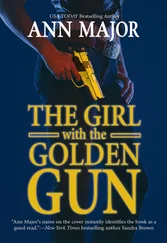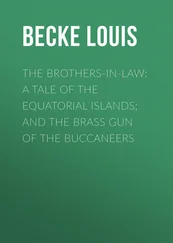Chapter Thirteen: Nicholas
1 Two different… Lora Farley, testimony. WF-SE, January 14, 1992, 8.
2 Sweet was at… George Sweet, testimony. WF-SE, January 14, 1992.
3 “She did say something…” NES, 64.
4 “I know I went…” Ibid., 76.
5 Bill Farley learned… William Farley, interview.
6 The Virginia Beach… Det. Donald Adams, interview.
7 “It was unbelievable…” William Farley, interview.
8 The formal cause… Det. Donald Adams, testimony. WF-SE, 211.
9 “It’s the only…” Det. Donald Adams, interview.
10 The next night… Beverly Cook, testimony. WF-SE.
11 Months later… William Farley, testimony. WF-SE.
12 “I just try…” William Farley, interview.
13 Three months later… EE-ASC.
14 On October 31… Norfolk Virginian-Pilot , December 13, 1989, 1.
15 Nicholas sat… Norfolk Virginian-Pilot , November 1, 1989, 1.
16 On December 12… Jimmy Edney, testimony. VA-NE, December 12, 1989, 3.
17 “These were offenses…” Norfolk Virginian-Pilot , December 13, 1989.
18 “Number one…” William Farley, interview.
19 “One thing…” Randy Singer, interview.
20 “This is not…” Randy Singer, opening statement. WF-SE, January 14, 1992.
21 Bill Farley lost… William Farley, interview.
22 In an order… John K. Moore, letter, response to defendants’ demurrer. WF-SE, October 4, 1990.
23 “Unfortunately,” Judge Moore… Ibid., 2.
Chapter Fourteen: The New Tyranny
1 Strict gun controls… Daniel Abrams. “Ending the Other Arms Race.” Yale Law and Policy Review 10:2 (1992): 515–16.
2 On December 14… New York Times , December 28, 1992, 1.
3 In his book… David B. Kopel, The Samurai, the Mountie, and the Cowboy (Buffalo, N.Y.: Prometheus Books/The Cato Institute, 1992), 319–20.
4 A 1993 survey… Louis Harris. “A Survey of Experiences, Perceptions and Apprehensions About Guns Among Young People in America,” LH Research Inc. (July 1993): ix.
5 Fifty-five percent… Ibid., x.
6 In a related… Louis Harris, “A Survey of the American People on Guns as a Children’s Health Issue,” LH Research Inc. (June 1993): 6, 9.
7 I read with… Mick Luckovich, “Remember, Carry a Map…,” Newsweek, July 12, 1993, 15.
8 In 1975… Josh Sugarmann, National Rifle Association: Money, Firepower & Fear (Bethesda, Md.: National Press Books, 1992), 45.
9 The 1993 Harris survey… Harris, “Survey of the American People,” viii.
10 Robert Sherrill… Robert Sherrill, The Saturday Night Special (New York: Charterhouse, 1973), 322.
11 A Sandston, Virginia… Baltimore Sun , July 20, 1993, 9A.
12 “Maybe that’s the answer…” David Troy, interview.
1 The site Dick chose… J. Michael Dick, interview.
ANY WORK OF JOURNALISM REQUIRES THE assistance of a large array of sources; any journalistic work on the subject of guns seems to require that many of these sources retain some degree of anonymity. To all those men and women who spoke with me on condition I would not reveal your names and professions, thank you. I recognize that trusting your privacy, livelihood, and perhaps even your personal safety is not an easy thing. I’d also like to thank the many honest, clear-eyed gun owners of America who told me, in correspondence and over the telephone, of their love of guns and the kinship that guns afford, and in a few cases of their real and pressing need to possess a weapon for self-defense. You provided me, often with a good deal of heat and enthusiasm, a much-needed perspective.
I owe an especially great debt to Bill Farley, Randy Singer, Dennis Henigan, Col. Leonard Supenski, Earl Taylor, Rex Davis, Jack “Ganja” Killorin, Thomas Stokes, Bernard La Forest, David Troy, Edward M. Owen, Donald Adams, Paxton Quigley, and Peder Lund. A special thanks goes to J. Michael Dick, for having the courage to talk on the record about matters that are too often buried beyond public view.
Betty Prashker, Michelle Sidrane, Kim Reilly, Andrew Martin, Joan DeMayo, and Penny Simon made me feel extraordinarily welcome at Crown Publishers, and convinced me from the start that there is still a taste among American publishers for confronting the most troubling issues of the day. Denise Shannon got the ball rolling. Court TV, in New York, graciously allowed me to watch a video of the entire Farley vs. Guns Unlimited trial. Mike Curtis, Cullen Murphy, and William Whitworth of The Atlantic Monthly demonstrated an exceptional tolerance for lengthy prose; Sue Parilla, queen of the Atlantic ’s fact-checking squad, taught me the meaning of pain.
The award for patience goes to my wife, Christine Gleason, and my children, Kristen and Lauren, for not ejecting me from the house as my deadline neared and my mood decayed. Jane Berentson, my boss at the Wall Street Journal , cheerfully engineered a much-needed month of leave, which her bosses, John Brecher and Paul Steiger, magnanimously granted.
Last, I’d like to acknowledge a debt to the occupants of that white Cadillac with Virginia plates who paid my neighborhood a visit—who fired a paint ball gun four times at my home at 3:30 one Sunday morning. If I ever needed reassurance that I was on the right track, you gave it to me in as vivid and convincing a manner as any I could imagine.
Acclaim for
ERIK LARSON’S LETHAL PASSAGE
“Larson creates one of the most readable anti-gun treatises in years.”
—
Washington Post Book World
“Shocking… compelling… Lethal Passage is a perfect blend of reporting and storytelling.”
—
Detroit Free Press
“Larson touches on all aspects of the gun issue in this country…. There is a feeling in America that perhaps enough lives finally have been terminated or forever changed by the pull of a trigger. That something real must be done. Erik Larson gives great voice to that feeling.”
—
San Diego Union-Tribune
“By tracing the path of a firearm that is worthless for hunting or target practice, we see how our nation’s laws have fallen out of sync with modern life…. Erik Larson shows us just what fearful legacy our national self-image is leaving our young.”
—
Dallas Morning News
Erik Larson writes for the front page of the Wall Street Journal . His articles and essays have appeared in The Atlantic, Harper’s , and The New York Times Magazine . He is also the author of The Naked Consumer . He lives with his wife and their two children in Baltimore, Maryland.
First Vintage Books Edition, January 1995
Copyright © 1994, 1995 by Erik Larson
All rights reserved under International and Pan-American Copyright Conventions. Published in the United States by Vintage Books, a division of Random House, Inc., New York, and simultaneously in Canada by Random House of Canada Limited, Toronto. First published in hardcover in slightly different form by Crown Books, a division of Random House, Inc., New York, in 1994.
All rights reserved. No part of this book may be reproduced or transmitted in any form or by any means, electronic or mechanical, including photocopying, recording, or by any information storage and retrieval system, without permission in writing from the publisher.
The Library of Congress has catalogued the Crown edition as follows:
Larson, Erik.
Lethal passage: how the travels of a single handgun expose the roots of America’s gun crisis / by Erik Larson.—1st ed.
Читать дальше
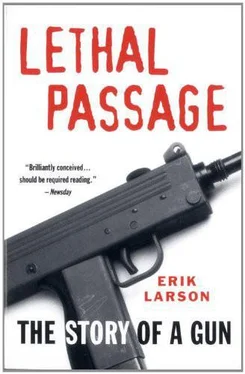
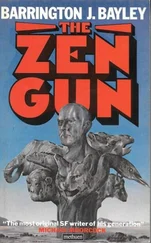
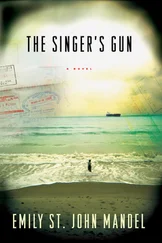
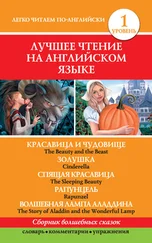
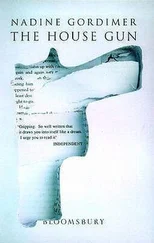

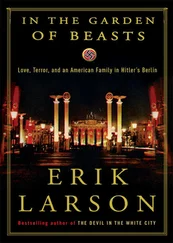

![Ричард Деминг - Whistle Past the Graveyard [= Give the Girl a Gun]](/books/412176/richard-deming-whistle-past-the-graveyard-give-t-thumb.webp)
